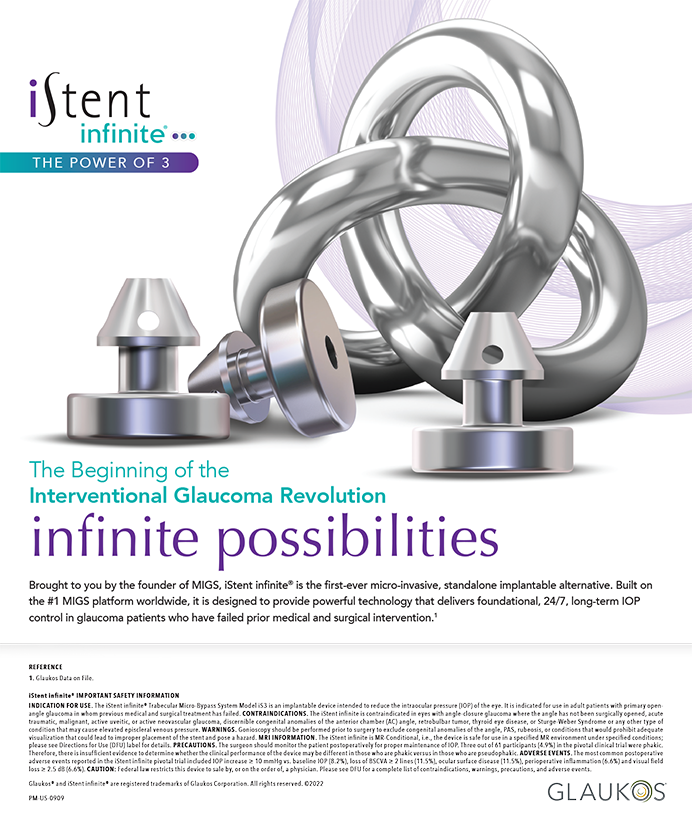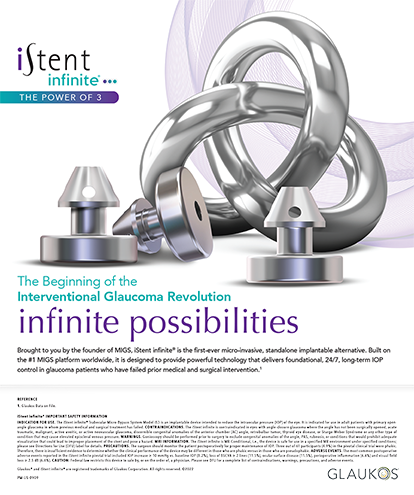Today's Practice | Feb 2006
Mission: Control
Putting your business processes in order.
Shareef Mahdavi
Most surgeons, I think, are pretty happy with their refractive surgery results. They have a process by which they approach surgery, called surgical protocol, which at its core is designed to help them execute the procedure the same way each time. Following protocol is a means to achieving results that are predictable and that, in virtually every case, lead to a successful outcome.
Imagine for a moment that a surgeon got bad results one-third or even one-half of the time. It's unthinkable—that surgeon would be out of business! Those are, however, exactly the type of results being achieved on the front end of the refractive surgery practice. I define the front end as those activities that lead up to a patient's actually undergoing surgery. These activities include exposure to advertising, an initial phone call with someone at the practice or center, and then a consultation to determine the patient's candidacy for surgery.
Similar to what happens in the operating suite, each of these front-end activitites should be thought of as a process. That is, each deserves the focus and attention required in order to raise it to the same standards of excellence achieved during surgery. The front-end process comprises the major service components of the LASIK procedure, and the business staff should strive to improve their quality with the same fervor that the ophthalmologist applies to eliminating surgical complications.
THE PURSUIT OF EXCELLENCE
When I use the word quality, I am referring to the use of defined processes (similar to protocols) in place in a refractive practice. When we focus on improving quality at the point of service between a provider and a patient, we engage in a ruthless pursuit of excellence. Over the years, I have come to see why such a pursuit is vital: service is the only true means of differentiation for the refractive surgeon.
Now it's time to begin exploring how to pursue excellence in all aspects of your practice. Two compelling reasons make this subject timely: (1) refractive surgery today includes a multitude of treatments and procedures, a list that is only going to get bigger and better, and (2) even after 10 years, most of the practices I have encountered still perform poorly in basic service areas such as answering the telephone. The few practices that execute these tasks well are clearly on the path toward excellence in service. They have mastered telephone communications and expend similar efforts toward excelling in other areas of service.
SURVEY SAYS?
The first step to bringing your service under control is taking measurements. Evaluate one or more areas of your practice by collecting data to understand your baseline of service activity. A good way to begin is to survey your patients for an objective view of how well you are doing. Restaurants, automobile dealerships, and hotels frequently ask customers to complete a survey. They collect the data and then analyze them for trends and areas in need of improvement. You should do the same on a consistent basis. Greg Korneluk, Chairman of the International Council on Quality Care, suggests having the surveys sent to your home. The customer can then communicate directly with the “CEO” of the practice in a nonthreatening manner. Each survey you get is a nugget of information on how you can improve what you do for your patients.
The consistent use of surveys will soon paint a picture of what customers like and dislike about your practice. This picture may be relatively healthy or rather sickly. Either way, you will need to discuss and solve the issues raised in the surveys with your staff members. The appropriate forum is likely a staff meeting or, if the staff is too large, an appointed “quality team” that includes representation from all areas of the practice and has the charter to find and implement solutions. In doing so, you will devise benchmarks (what other refractive practices do, what other businesses do) and then standards for your own practice. In a maternity ward, a common standard is “no dropped babies.” The Domino's Pizza brand was built on “delivery in 30 minutes, or it's free.” FedEx makes sure your packages get there “absolutely, positively overnight.” Your standards do not need to be part of an advertising campaign, but, if done well, they will gauge improvements in daily operations. How quickly are phone calls answered? How long are people waiting before they are seen? How long does someone need to stay on the day of the procedure? What percentage of patients receives a thank-you note within 2 weeks of their surgery?
CASE EXAMPLE
Let's use no-shows as an example for measurement and improvement. Assume you have seven no-shows out of every 50 consultations scheduled. Is this ratio good or bad? That depends on your standard. Either way, it becomes a baseline measurement on which you can improve.
Based on a discussion at a staff meeting, you brainstorm many ideas for reducing the number of no-shows and decide on a four-step process:
• We will call all patients scheduled for a consultation beginning 36 hours prior to the appointment until we reach someone (instead of leaving messages on the answering machine or voicemail).
• We will reemphasize the importance of being on time for the appointment and have alternative time slots available in case they need to change their time.
• If they resist setting an alternative time, we will invite them to share with us any lingering concerns that they may have about the procedure.
• If they wish to speak to the doctor, we will schedule a phone call.
This process is assigned to one of the counselors. During the next 2 months, the percentage of no-shows drops from 14% to 4%. Further, the staff formalizes the process by documenting it and adding it to binders that define all work processes. The document is also turned into a checklist, an important tool that is being used increasingly in service-based industries. (You would be well served to convert most or all of the work duties throughout your practice into checklists. They are another great tool for improving quality at the point of service.)
CONCLUSION
You cannot and will not want to tackle every problem at once. What is important is to choose areas that will have an immediate, positive impact on the satisfaction of your patients, because without them you have no business. Once these issues are resolved, you can move on to the next most vital elements needing attention.
Customer surveys, strategic planning, implementation, and reevaluation are all steps toward reducing errors in the daily activities of the practice. Fewer mistakes produce more satisfied patients, staff, and surgeons, reduce the expense involved in correcting errors, and increase the profitability of the practice. Defining and measuring all workflow activities as processes is the first key step to turning your practice from the proverbial hockey match into an elegantly orchestrated ballet.
Shareef Mahdavi draws on 20 years of medical device marketing experience to help companies and providers become more effective and creative in their marketing and sales efforts. Mr. Mahdavi welcomes comments at (925) 425-9963 or shareef@sm2consulting.com. Archives of his monthly column may be found at www.crstoday.com.




